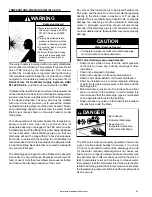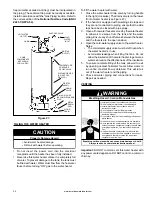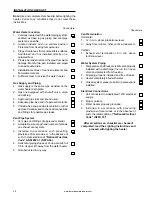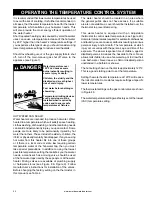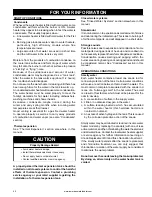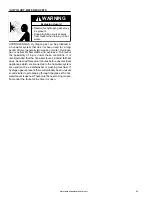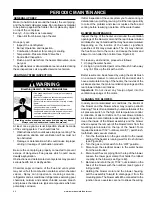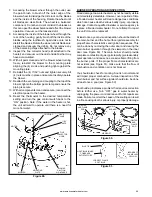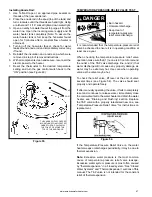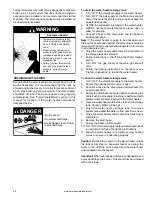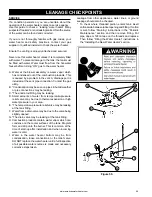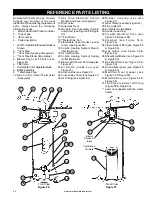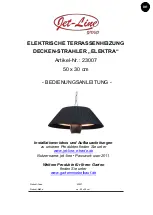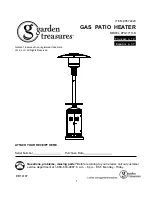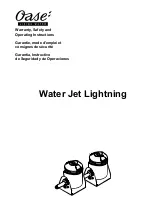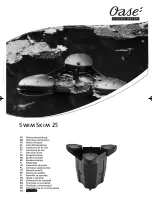
D. Inspection, cleaning, priming
Visually inspect the inside of the pipe and
fi
tting
sockets and remove all dirt, grease or moisture
with a clean dry rag. If wiping fails to clean the
surfaces, a chemical cleaner must be used. Check
for possible damage such as splits or cracks and
replace if necessary.
Depth-of-entry
Marking the depth of entry is a way to check if the
pipe has reached the bottom of the
fi
tting socket
in Step F. Measure the
fi
tting depth and mark this
distance on the pipe O.D. You may want to add
several inches to the distance and make a second
mark as the primer and cement will most likely
destroy your
fi
rst one.
Apply primer to the surface of the pipe and
fi
tting
socket with a natural bristle brush. This process
softens and prepares the PVC or CPVC for the
solvent cementing step. Move quickly and without
hesitation to the cementing procedure while the
surfaces are still wet with primer.
E. Application of solvent cement
•
Apply solvent cement evenly and quickly around
outside of pipe at a width a little greater than the
depth of the
fi
tting socket.
•
Apply a light coat of cement evenly around the inside
of the
fi
tting socket. Avoid puddling.
•
Apply a second coat of cement to the pipe end.
•
Cans of cement and primer should
be closed at all times when not in
use to prevent evaporation of
chemicals and hardening of cement.
•
They are also very flammable and
should be kept away from heat or
flame.
Fire Hazard
WARNING
Figure 45.
F. Joint assembly
Working quickly, insert the pipe into the
fi
tting socket
bottom and give the pipe or
fi
tting a 1/4 turn to evenly
distribute the cement. Do not continue to rotate the
pipe after it has hit the bottom of the
fi
tting socket.
A good joint will have suf
fi
cient cement to make a
bead all the way around the outside of the
fi
tting hub.
The
fi
tting will have a tendency to slide back while
the cement is still wet so hold the joint together for
about 15 seconds.
Figure 46.
G. Cleanup and joint movement
Remove all excess cement from around the pipe
and
fi
tting with a dry cotton rag. This must be done
while the cement is still soft.
The joint should not be disturbed immediately after
the cementing procedure, and suf
fi
cient time should
be allowed for proper curing of the joint. Exact drying
time is dif
fi
cult to predict because it depends on
variables such as temperature, humidity and cement
integrity. For more speci
fi
c information, you should
contact your solvent cement manufacturer.
Figure 47.
www.americanwaterheater.com
37

